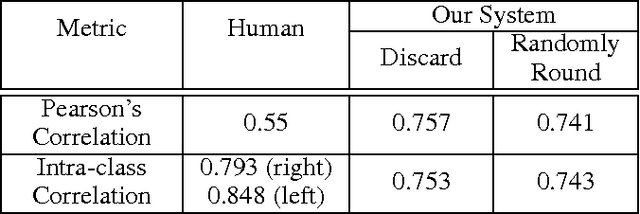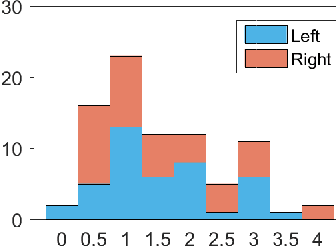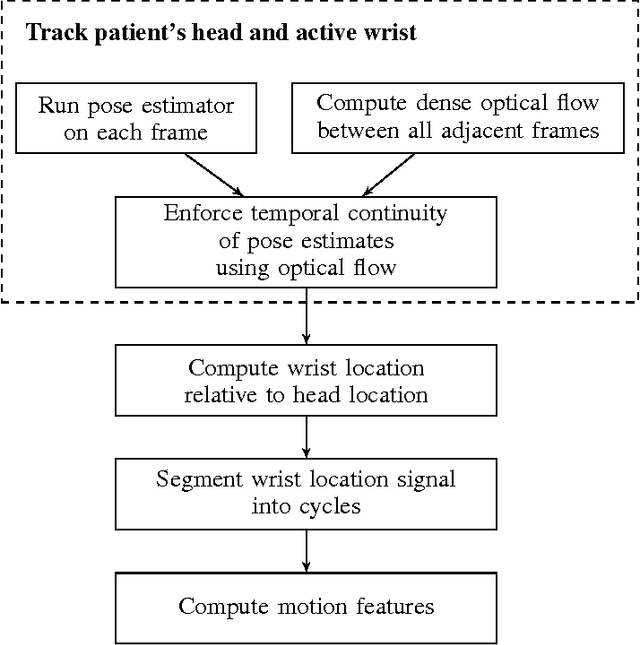Jeremy Schmahmann
A Video-Based Method for Objectively Rating Ataxia
Sep 07, 2017



Abstract:For many movement disorders, such as Parkinson's disease and ataxia, disease progression is visually assessed by a clinician using a numerical disease rating scale. These tests are subjective, time-consuming, and must be administered by a professional. This can be problematic where specialists are not available, or when a patient is not consistently evaluated by the same clinician. We present an automated method for quantifying the severity of motion impairment in patients with ataxia, using only video recordings. We consider videos of the finger-to-nose test, a common movement task used as part of the assessment of ataxia progression during the course of routine clinical checkups. Our method uses neural network-based pose estimation and optical flow techniques to track the motion of the patient's hand in a video recording. We extract features that describe qualities of the motion such as speed and variation in performance. Using labels provided by an expert clinician, we train a supervised learning model that predicts severity according to the Brief Ataxia Rating Scale (BARS). The performance of our system is comparable to that of a group of ataxia specialists in terms of mean error and correlation, and our system's predictions were consistently within the range of inter-rater variability. This work demonstrates the feasibility of using computer vision and machine learning to produce consistent and clinically useful measures of motor impairment.
 Add to Chrome
Add to Chrome Add to Firefox
Add to Firefox Add to Edge
Add to Edge